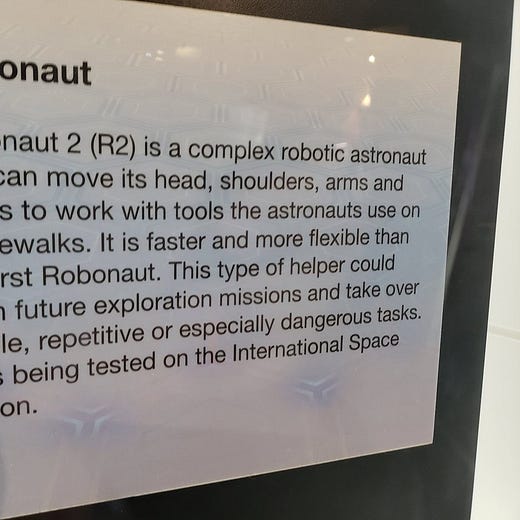ChatGPT Isn't Going To Take Your Job
Automation, or the use of technology to perform tasks that were previously performed by humans, has been a topic of significant interest in economics due to its potential impact on labor demand.
Artificial intelligence (AI) is becoming increasingly prevalent in our daily lives, from virtual assistants on our smartphones to self-driving cars on the roads. As AI technology continues to advance, it is transforming a wide range of industries and has the potential to revolutionize many aspects of society.
One way that AI connects with basic economic concepts is through automation. As AI systems become more sophisticated, they are able to perform a growing number of tasks that were previously done by humans. This has led to concerns about the potential for AI to automate away jobs and displace human workers.
However, the demand for labor is not determined solely by the presence of automation. Instead, it is also influenced by a range of factors, including the overall health of the economy, the availability of jobs in different industries, and the skills and experience of the workforce.
In some cases, the introduction of AI may lead to the creation of new jobs that did not previously exist. For example, as AI systems become more widely used, there will likely be a growing demand for workers with the skills and knowledge to develop, maintain, and manage these systems.
Overall, the impact of AI on the demand for labor is complex and will vary depending on a range of factors. As AI technology continues to advance, it will be important for policymakers and business leaders to carefully consider its potential effects on the economy and the workforce.
Everything above that line was written by the internet’s newest sensation, ChatGPT. All I had to do was enter the following prompt into a text box and the site spit back those paragraphs in about 10 seconds:
Write a short blog post on the prevalence of artificial intelligence and how it connects with basic economic concepts about automation and the demand for labor.
OpenAI, the creator of ChatGPT, intended the site to act as a chatbot. I could have responded to the original output and asked it to change parts of the story or include citations. It would have made those updates within a few seconds. There are some limits to what the chatbot can do since it isn’t actively searching the web as we chat, but the results so far have been a mix of terrifying, hilarious, and brilliant.
Once the site launched, users flocked to OpenAI to create an account and play around. CEO Sam Altman tweeted that the site went live on Wednesday, November 30th, and crossed 1 million users by Monday, December 5th. To get a sense of just how fast that is, Chartr put together a graph comparing it to another popular AI app (lensa) and other popular tech sites (Instagram and Spotify):
Those opening paragraphs linking automation and labor demand are largely accurate. The notion that workers will be replaced by artificial intelligence or automation is based on a concept known as the substitution effect. This effect is driven by the relative price of labor and capital. When the price of capital decreases, firms may be more likely to substitute it for relatively more expensive labor, leading to a decrease in the demand for workers. The underlying assumption, however, is that firms make this change while producing the same amount of products as before.
This fear of automation isn’t new, but there are a lot of things people get wrong about automation. While the substitution effect is possible, there’s also the potential for automation to increase employment through the scale effect. As the price of automation decreases, so does the average cost of producing whatever product the company wants to sell. Firms can pass some of those savings on to consumers in the form of lower prices, which will result in consumers purchasing more products. If the price drop is large enough, and consumers purchase a lot more products, firms may actually end up hiring more workers and using more capital.
This automation paradox doesn’t even account for the fact that automation may also create brand-new jobs that we didn’t even realize were possible. Forty years ago, most people couldn’t imagine jobs like app developer, social media manager, or uber driver. As old jobs become automated, new jobs are created. The lost jobs are much more obvious, while the new jobs can take time to develop. There’s also a lot of fear among educators that chatbots will destroy the college essay, but I’d argue it’s high time we rethink how students are assessed anyway.
The Guardian was one of the few newspapers bold enough to say that “[p]rofessors, programmers and journalists could all be out of a job in just a few years.” Those are the sort of clickbait statements that have been around for literally 100 years (see below) as people have predicted machines will take someone’s job. In one of the first presidential interviews on television, President Kennedy complained that too many workers were being thrown out of the labor force because of automation. I’m not trying to say that ChatGPT isn’t really cool and will likely impact a wide variety of jobs. I just don’t think it’ll wipe out entire occupations.
Automation has historically targeted routine tasks that are easy to replicate, but it will largely affect people depending on their occupation. The routine parts of my job are the ones I hate doing and would love to automate! Instead of spending an hour proofreading my posts, I can ask a chatbot to do it. This significantly reduces the cost of writing the newsletter and allows me to increase my output. Since the newsletter only comes out once per week, I could write another article each week or I may just start a podcast instead.
There are an estimated 153,548,000 workers in the US, excluding proprietors, private household employees, unpaid volunteers, farm employees, and the unincorporated self-employed [US Bureau of Labor Statistics]
The 1850 Census was the first to collect occupational data on Americans and identified 322 different jobs. Today there are over 31,000 occupations. [US Bureau of Labor Statistics]
In 2020, 29% of transactions at food retailers were processed through self-checkout according to the data from food industry association FMI [CNN]
In 1964 science fiction writer Arthur C. Clarke predicted that we would live in a world in which we can “contact our friends anywhere on earth, even if we don’t know their actual physical location.” [Open Culture | YouTube]
The first dotcom address was registered in March 1985 to Symbolics, a Massachusetts computer company [Wired]










Another great post!
Sounds reassuring, but ChatGPT already took away my job as a copywriter and editor lol